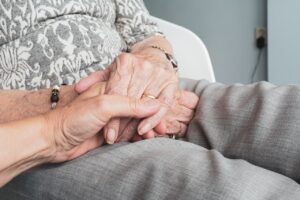
Creating a holistic care plan for seniors requires a caregiver to consider the physical, emotional, mental, and social factors contributing to the overall quality of life.
Thus, this article guides you on combining physical and emotional elements into a unified care plan, offering actionable tips on a suitable daily routine that promotes both aspects.
Understanding Holistic Care for Seniors
Holistic care for seniors addresses the full spectrum of a person’s well-being because aging impacts all dimensions of life, and addressing just one aspect without considering the others can leave crucial needs unmet. Below are two things to do before creating a comprehensive care plan.
Assess the Physical Needs
Start by observing how the senior navigates their daily environment. Are they having trouble walking or balancing? Are tasks like getting out of bed or using stairs becoming difficult? If these limitations are present, consider mobility aids that can support their independence.
Involving healthcare professionals is critical to ensure that the chosen support devices are appropriate for the specific needs. Doctors, physical therapists, and occupational therapists can offer personalized recommendations based on their assessments.
They can evaluate strength, balance, and overall health to determine whether a senior needs a cane, walker, or something more substantial like a scooter. You can shop here to explore various options that can significantly enhance mobility.
Chronic conditions, such as arthritis, diabetes, or heart disease, should also be factored into the care plan. These health issues can impact mobility and physical stamina, requiring medication and lifestyle adjustments, such as using ergonomic tools or mobility devices.
Further, sensory impairments, including vision or hearing loss, are common in seniors and require appropriate devices, like hearing aids or large-print materials.
Evaluate Emotional and Social Needs
Seniors face loneliness, anxiety, or depression due to changes in their health, living situations, or the loss of loved ones, and these can compromise emotional well-being.
Therefore, to assess emotional well-being, look for signs like withdrawal from social interactions, lack of interest in activities they once enjoyed, or persistent feelings of sadness. On top of that, regular conversations with the senior can help identify any emotional distress that may need attention.
Tips on How to Create a Comprehensive Care Plan
Create a Daily Routine that Incorporates Physical and Emotional Elements
A well-structured daily routine can significantly improve the quality of life by balancing physical activity, emotional care, and mental stimulation. Start by including light physical exercises, such as morning stretches, gentle walks, or chair yoga. These activities improve strength and mobility while boosting mood and energy levels.
One of the most effective ways to support emotional health is by fostering social connections. Regular visits from family and friends can help maintain these connections, but caregivers can also encourage participation in social activities such as community groups, clubs, or classes designed for seniors. This connection reduces feelings of isolation and fosters inclusion.
Mentally stimulating activities like puzzles, reading, or learning a new hobby can enhance cognitive function.
It’s essential, however, to maintain flexibility in the routine because the physical or emotional conditions can change. Therefore, caregivers should be ready to adjust activities and timing to meet evolving needs.
Incorporate Mobility Aids to Encourage Independence
Mobility aids are vital in promoting independence and preventing isolation. Mobility scooters, for instance, are an excellent option for seniors who can no longer walk long distances but still wish to move around independently. Home modifications like grab bars, ramps, or stairlifts can also create a safer living environment, reducing the risk of falls and injuries.
Utilize Technology for Holistic Care
Technology can enhance holistic care by supporting both physical and emotional health. Wearable health trackers can monitor physical activity, heart rate, and sleep patterns, providing real-time insights. You can share this data with healthcare providers to adjust medications or treatments.
On the emotional side, technology helps combat isolation by connecting seniors with loved ones through video calls or social apps designed for older adults. Video calls, for example, offer a way for seniors to stay in touch with loved ones, even if physically distant.
Regularly Review and Adjust the Care Plan
Physical health can fluctuate due to new medical conditions or changes in mobility, so ongoing evaluations are necessary. Caregivers should check for any signs of increased difficulty in movement or new pain, adjusting mobility aids or exercise routines as required. Similarly, emotional health can shift over time, especially if a senior experiences loss, depression, or cognitive decline.
Further, open communication allows for a more personalized approach that respects the changing preferences of a senior.
Conclusion
A holistic care plan is essential for seniors because it addresses their overall well-being, enhancing physical and emotional health. For instance, it improves mobility and independence, allowing seniors to remain active and self-sufficient.
Secondly, it fosters emotional well-being by encouraging social interactions and mental stimulation to prevent isolation and depression. It also provides a flexible approach that can be adapted as the needs change, ensuring continuous, personalized care.